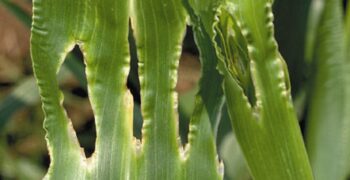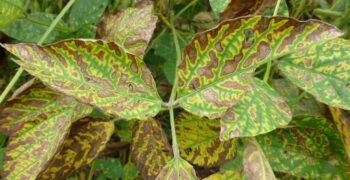Background:
Crown rot is a plant disease that affects a wide range of crops and ornamental plants. It is caused by various fungal pathogens that infect the crown of the plant, leading to rotting of the tissues.
Causes:
Crown rot is primarily caused by soil-borne fungi such as species of Fusarium, Phytophthora, Rhizoctonia and Pythium. These fungi can survive in the soil for long periods and infect plants through wounds or natural openings.
Symptoms:
Crown rot symptoms typically include wilting of the plant, yellowing or browning of leaves and, eventually, the collapse of the plant. The crown and roots may show signs of decay, appearing brown, mushy, or water soaked.
Conditions:
Crown rot pathogens thrive in wet or poorly drained soils. Overwatering, poor soil drainage, and excessive irrigation can create favorable conditions for fungal growth and infection.
Management:
Managing crown rot involves several strategies such as the following:
- Preventive measures. Improve soil drainage and avoid overwatering. Plant in well-drained soils or raised beds if necessary.
- Crop rotation. Avoid planting susceptible crops in the same area year after year.
- Resistant varieties. Use plant varieties that are resistant or less susceptible to crown rot.
- Sanitation. Remove and destroy infected plant debris to reduce the spread of fungi.
- Fungicides. In severe cases, fungicides may be used, although they are often more effective as preventive measures rather than curative treatments.
Impact:
Crown rot can cause significant economic losses in agriculture and horticulture by reducing crop yields, affecting plant health and sometimes leading to plant death.



